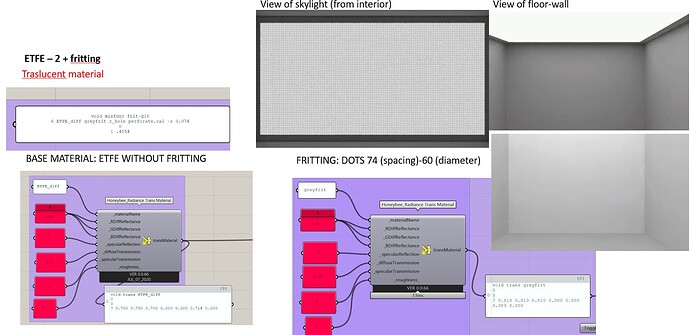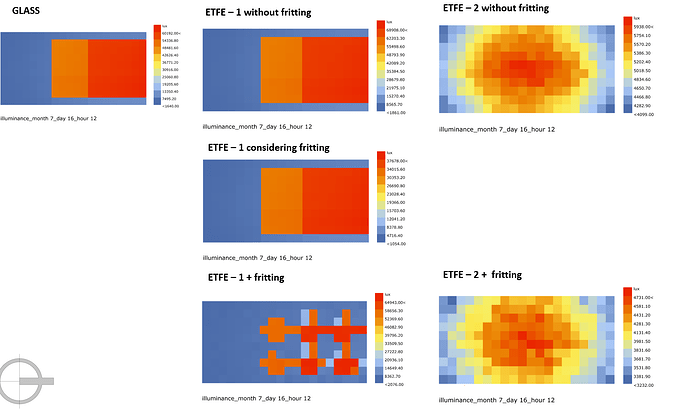Hello everyone,
I write to ask for some technical advices for a project where I would like to model the ETFE material of the skylight of an atrium in order to estimate the effects and possible problems of glare inside the space with different types of fritting.
I read the article “A New Approach to Modeling Frit Patterns for Daylight Simulation” and different posts. I tried to model the ETFE material by using the Radiance function “Perforate.cal” but I would like to understand if the results I obtained are somehow realistic.
I modelled materials in different ways in order to understand better the behaviours:
• Standard glass (tv 65% -refractive index 1.52)
• ETFE without fritting (tv 72%) as a glass but changing the refractive index to 1.4 (CALLED ETFE-1)
• ETFE without fritting as a translucent materials (CALLED ETFE-2)
Then I tried to apply the fritting (modelled as translucent material) in three ways:
• Just changing the tvis of ETFE-1
• Using Perforate.cal on ETFE -1
• Using Perorate.cal on ETFE-2 (translucent)
For example, here the definition of ETFE2 and the fritting:
Here the results in terms of lux I got taking the example of a day in July at noon (the images have not the same legend scale).
Which of these approaches is the most appropriate and realistic?
Is there someone that by chance modelled the script and the components described in the article?
Finally, about the Perforate.cal function I do not understand the meaning of “frit-g40” since I changed this value but nothing happened.
Any help would be very appreciate
Thanks

